Imitating the Master: The Seo Jin Super Game
Recently, Sega started to leak their plans for a “Super Game”, something that will use Sega’s classic franchises to print money so their company can survive. But it turns out that this isn’t the first time that Sega’s classic game rights have been used as part of a “Super Game”, but that time Sega didn’t make the money– let’s dig into the seedier side of the arcade business again!
A Super Time
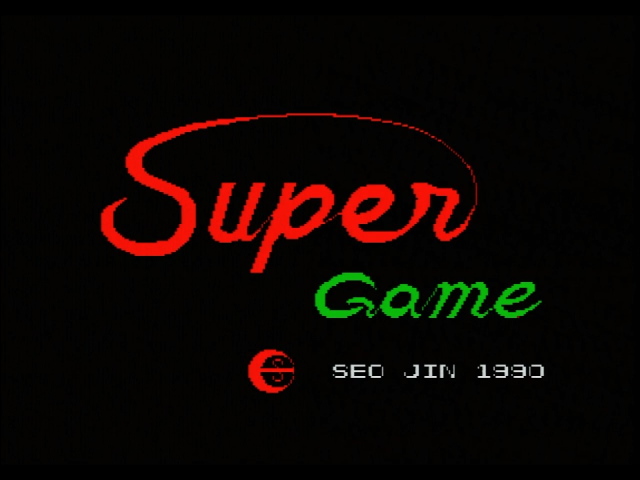
Today’s subject is the Super Game, by Seo Jin. But who is “Seo Jin”? It’s a Korean name for sure, and seems to be associated with several other bootlegs as well from the early 1990’s, but not much is clear. The bootleg games wiki claims this board was produced by Sono Game, a company with even less of a record, but some of its other information on this board is inaccurate, as we’ll see. Still, it’s the best I could find.
It kind of makes sense that a board like this would come from South Korea. In the latter half of the 1980’s, a major international concern arose as the United States learned that South Korea was not recognizing their copyrights; the country only reluctantly adopted copyright laws in line with the west after 1986; computer programs weren’t even legally copyrightable until 1987. And as for Japanese companies, they had no direct access to the South Korean market. One might wonder why, but this is not a blog about geopolitics. Unless I later decide I want it to be.
Now, there were limited imports of Japanese consoles by Samsung and other companies, usually rebranding them. The Nintendo Famicom became the Hyundai Comboy, and the Sega Master System became the Samsung Gam*Boy. But these markets were, as far as I can tell, only a small portion, and were dwarfed by gray-market imports of clone consoles. So who was Seo Jin? They seem to be associated with a number of bootleg arcade boards, but it’s hard to find too much information on them. It’s a fairly common personal name, after all.
What is it?
What is the Seo Jin Super Game? It’s a nice, small JAMMA board (though it’s missing the key).
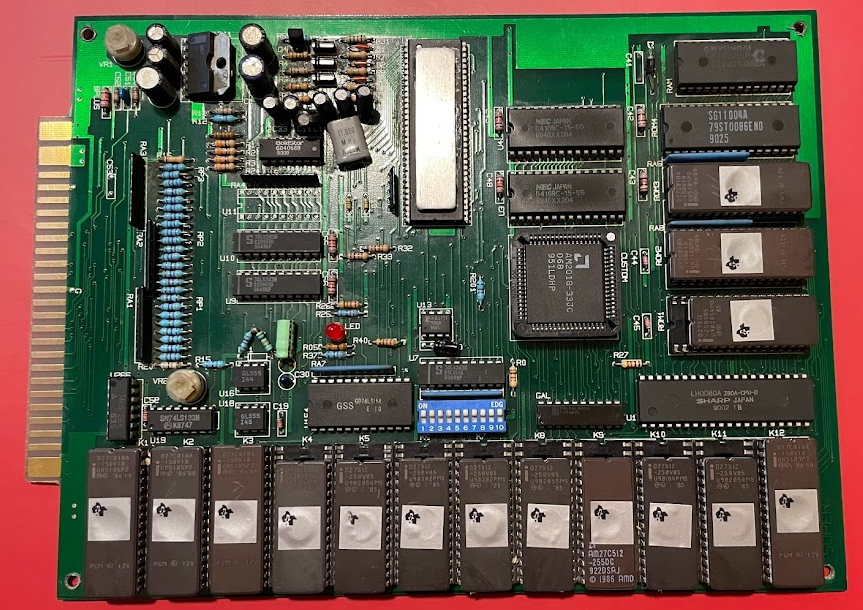
It’s powered by a Z80 CPU, though most of its other chips seem to be GALs, gate arrays, or have a big metal heatsink epoxied to it.
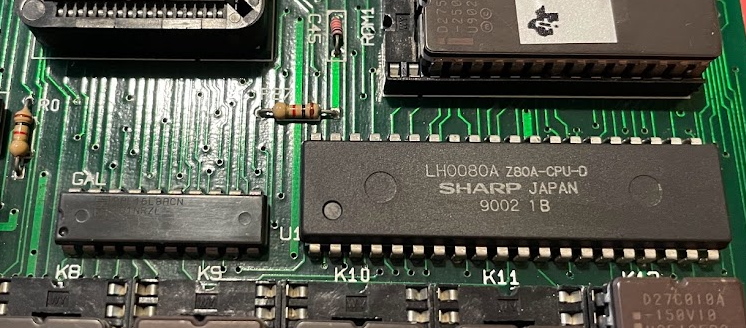
Long story short, it’s a Sega Master System. I’m quite fascinated to know if the chip underneath the epoxied heatsink is a real VDP or a clone; 1990 is pretty early for a clone VDP. But as we see, this VDP does seem to have some odd behaviors that might just mark it as such.
The Master System had an interesting history in Korea. If you look through the SMS Power lot of Korean exclusives. It seems that even though the MSX line of computers were sold in Korea, many MSX1 titles from Japan were repackaged to be sold as Master System games as well. Using, of course, the awful backwards compatibility palette that gave Pitfall Harry dark yellow skin. If there was a Nicole Express drinking game, you’d have to take a shot.
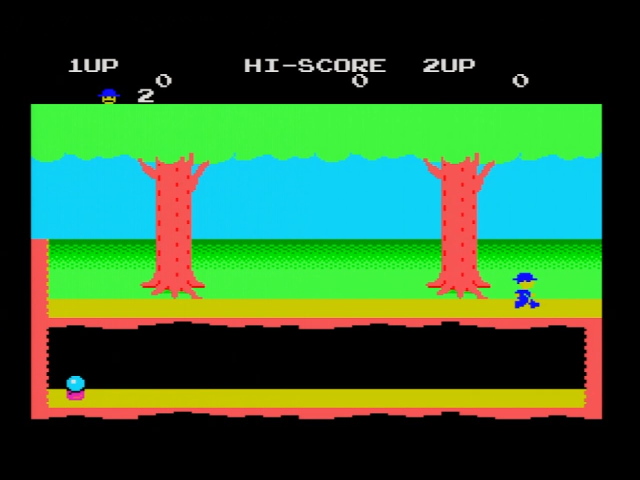
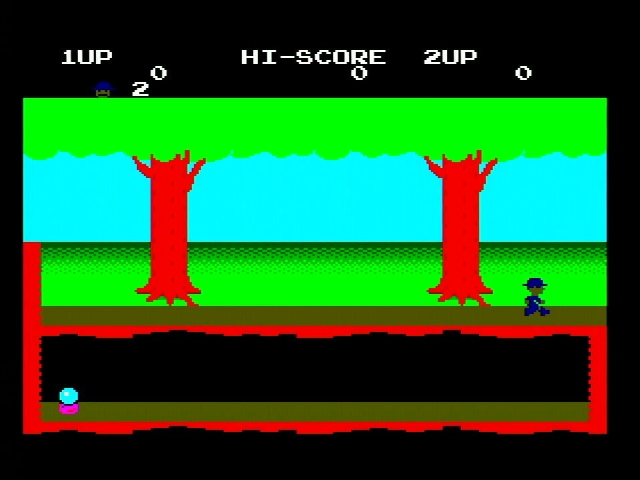
Was this legal? That’s a complicated question, and honestly the agreements if any that were signed are probably lost to history. They’re definitely lost to me. But chances are the answer is no.
Some Super Games for Super Game
So, seriously, what is Super Game? Well, at the end of the day, it’s a multi-cart containing a bunch of Korean Sega Master System games. And by a bunch, I mean thirty-two. (Interestingly, the game list plays the My Hero music, but My Hero isn’t present) And by Sega Master System games, I mean games that could theoretically be played on a Sega Master System.

The only source I see about this game, the bootleg games wiki linked above, is missing sources for many of the games; therefore, I think it’s worth going through all thirty-two games, listing what they are, and giving a few words. Plus, that’ll help pad out this post.
Gameplay
The bootleg games wiki reports that this is a time-based system, like Nintendo’s PlayChoice-10. However, as far as I can tell, that’s not the case! Instead, coins seem to correspond to having the right to press start in a game, and getting a game over returns you to the title screen. It’s all a bit buggy; the JAMMA button 3 seems to be supposed to be linked to a “select” feature that in most games, only works on the title screen, so you have to get game over. Getting game over costs your token, but you can put in another one.
So in general all of the games have had edits to support this feature. That makes this a fairly involved bootleg! On the other hand, though, most games are hacked to have additional lives, which makes more sense for a timer-based game. So it’s possible that the DIP switches do something related to this; I don’t have any documentation.
Let’s begin!
Super Bubble

Super Bubble is, in reality, Bubble Bobble for the Sega Master System, which was called Final Bubble Bobble in Japan. But the background is black, which is odd– we’ll discuss that more later, but file away in the back of your mind that in the official release, it’s blue.
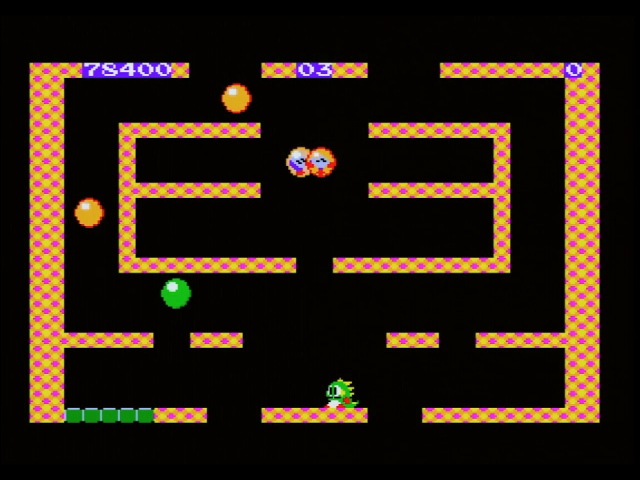
The only other changes of note are that copyrights have been removed, and Bub and Bob are now cats, as you start with nine lives. This will be pretty typical for most of these games, as we’ll see. Interestingly, this is my first time playing the Master System version of Bubble Bobble. It’s a pretty good port.

Tetris
This is Super Tetris, which is a fairly common unlicensed Tetris game for the Master System. (The Master System never got a licensed version thanks to Nintendo and BPS having the rights locked-up) It seems to originate in Korea, and is also seen in the form of a Game Gear port (which seems to be identical to the SMS game, as the Game Gear can run in Master System graphics mode).
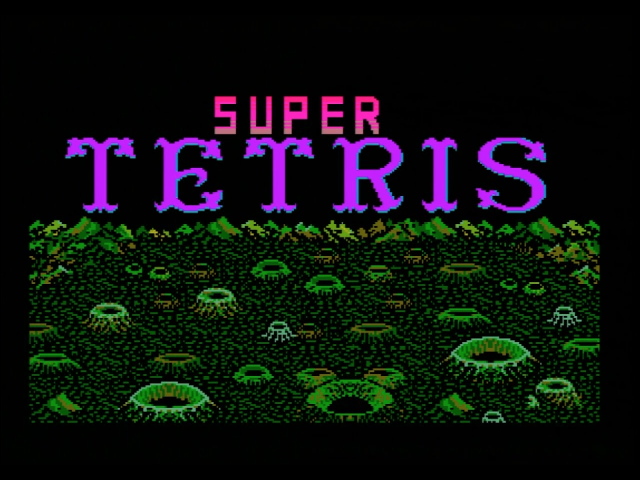
Interestingly, this isn’t the only Tetris game to run on Master System-like arcade hardware, as Sega would port their own arcade game to their “System E” board. That being said, while both play renditions of the “Tetremix” theme from the original Sega arcade game, they have nothing in common beyond that.
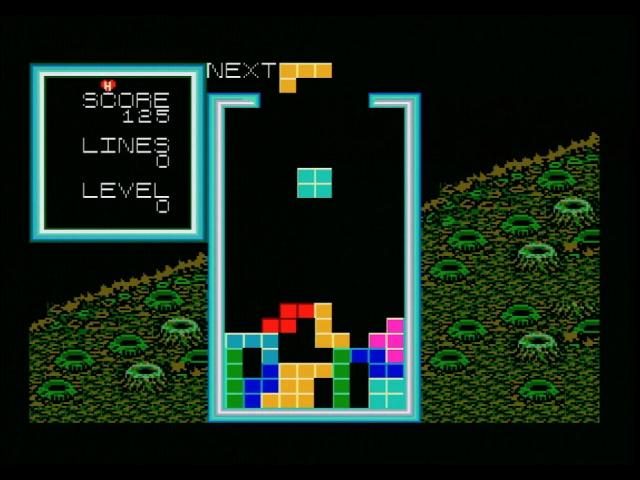
It’s worth noting that this is in fact a Master System game and runs in the Master System graphics mode; this isn’t clear yet (this list starts out strong), but there will be a lot of MSX and SG-1000 ports on this board.
Wonder Boy
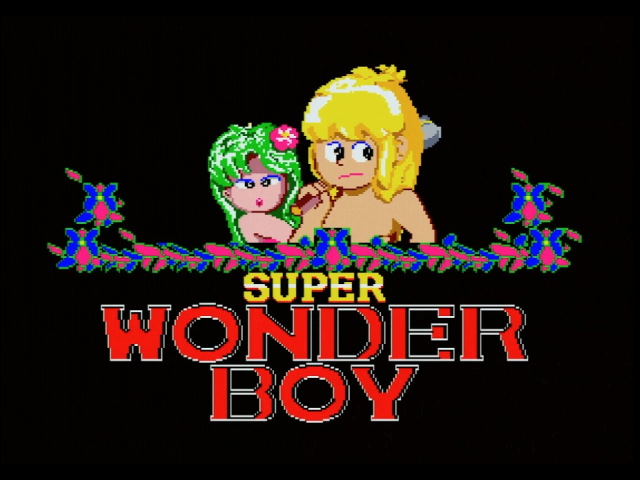
Super Wonder Boy is the Japanese release title for what we in the west got as Wonder Boy on Master System, since Japan had already got a version of Wonder Boy for the SG-1000. This port is very close to the Sega System 1 original Wonder Boy.
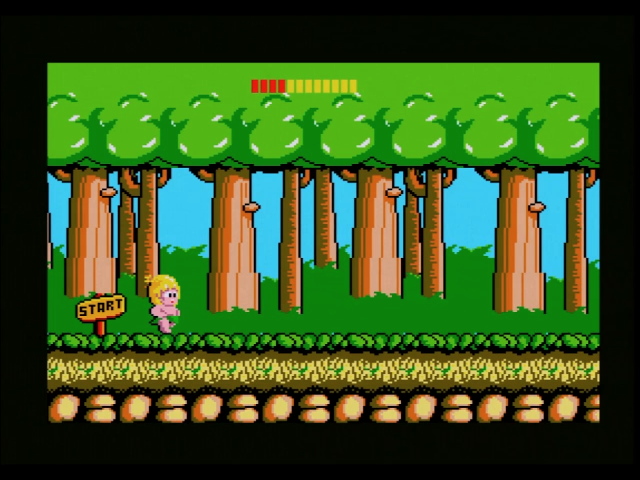
As usual, Wonder Boy must save his girlfriend Tina. (Or is she only Tina when this is Adventure Island?) In this game he has nine lives to do so. Very generous for an arcade game! Not sure if the DIP switches control that.
Alex Kidd
This game crashes when I attempt to load it. The aforementioned wiki article reports it as being Alex Kidd in Miracle World, however.
Super Mario
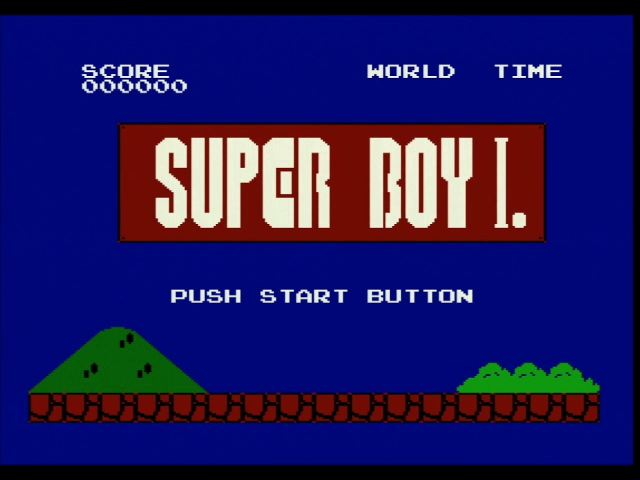
Another original! Unfortunately, this game, Super Boy I, was created by Zemina for MSX1 machines originally. It’s our first MSX1 port, and so we’ll see these patterns repeat: the palette’s not very good looking here, and the scrolling is janky as hell. Equally messy are the physics, and the items are randomized; despite level layouts being close to Super Mario Bros., you can’t rely on your memory to find Super Mushrooms.
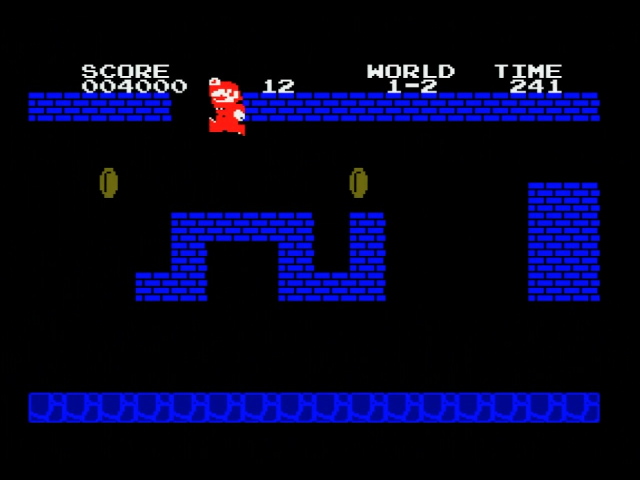
There’s no Warp Zones either, so don’t bother trying.
The original Super Boy seems to have been a hit for Zemina, as there were a number of follow-ups. Super Boy 2 is an SMB1 clone with more levels, Super Boy 3 adds more elements from later Mario games, and 1992’s Super Boy 4 moves the series to the Master System proper, finally putting aside the old TMS9918A graphics modes.

Hello Kang Si

This game is labeled Hello Kang Si on the list, but Buk Doo Gun in-game. “Buk Doo Gun” seems to be a transliteration of 북두의 권, the Korean name of Fist of the North Star, but I’m welcome to be corrected. In any case, this is indeed Fist of the North Star for the Sega Master System. If you’re a westerner, this title screen may not look familiar to you…
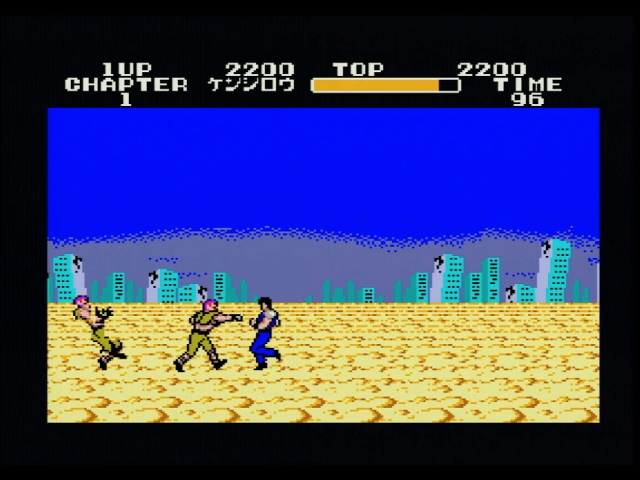
But it’s actually the same game that was released in the west– stripped of its license– to become Black Belt. A belt-scrolling martial arts beat ‘em up.
Solomon Key
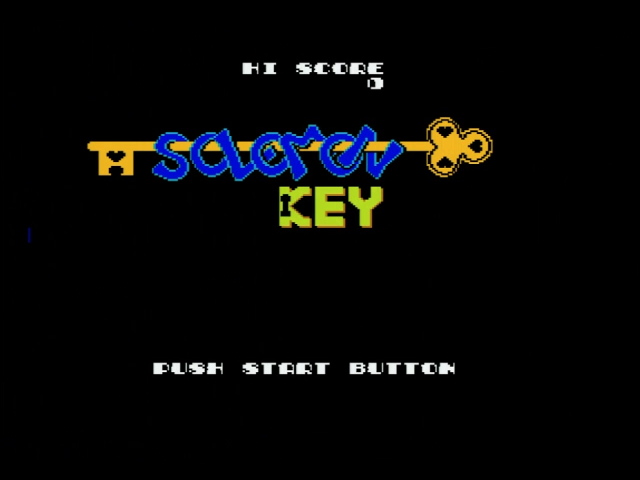
This version of Solomon’s Key never left Japan officially, so I think this title screen is custom. In Japan the title of this game looks like this:
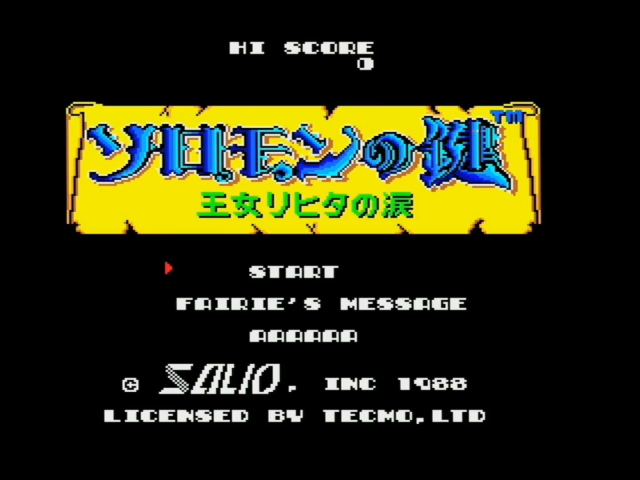
That being said, any way you play it the gameplay is the same as the NES version that did leave Japan, somewhat hampered by the smaller screen size. This version of the puzzle-platformer pioneer is as good as any; the extra lives are a nice to have.
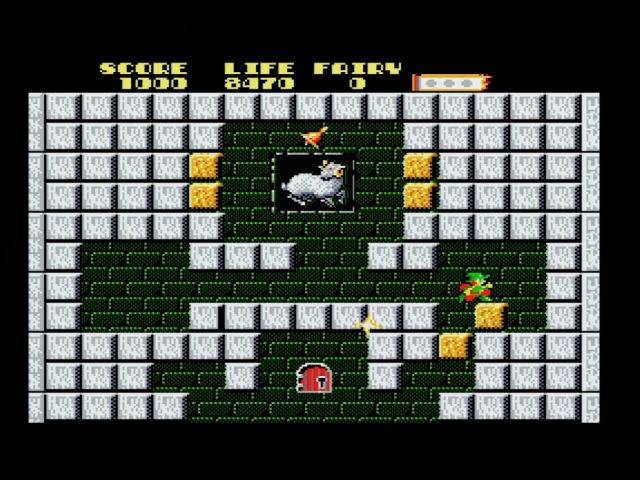
Buk Doo Gun
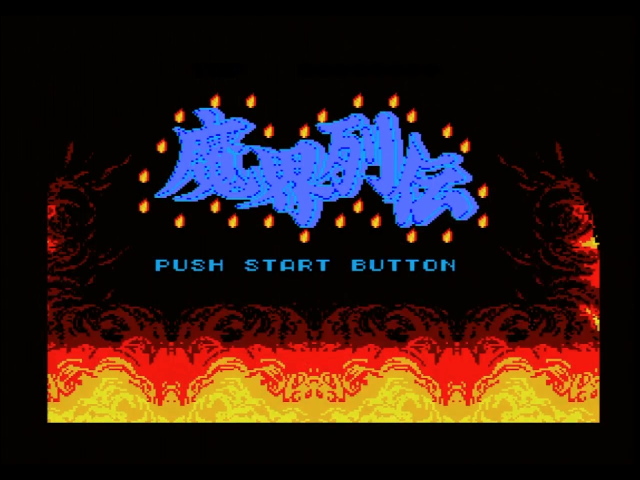
Wait, didn’t we already see Buk Doo Gun? Well, now it’s Makai Retsuden. The Korean name of this game seems to be Magye Yeoljeon, so why it’s Fist of the North Star here is anyone’s guess. Much like Fist of the North Star, this got a name change in the US, and it’s called Kung Fu Kid here. In Japan, it’s the sequel to Dragon Wang.
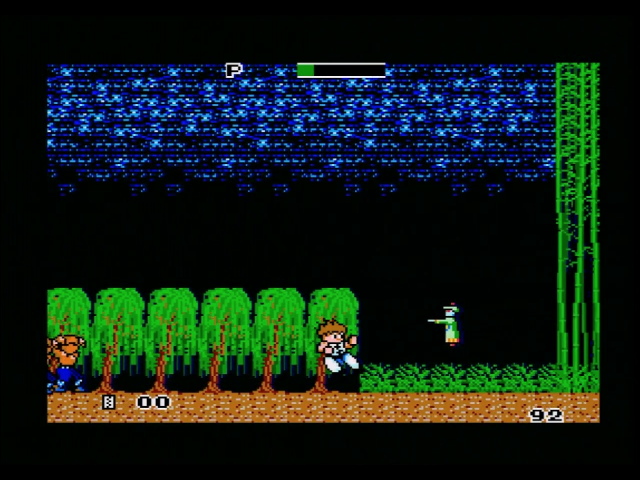
My guess would be that this and the game listed under Hello Kang Si were switched accidentally, but I’m not sure why this game would be titled Hello Kang Si either.
Invaders
We made it to page 2! And unfortunately, we’ll be seeing fewer and fewer Master System games as we go. Here’s an SG-1000 port; thankfully, it’s one that doesn’t get hit too hard with the palette difference.

That’s right, Invaders is actually Space Invaders. The SG-1000 port of this game is quite good, and having more aggressive colors doesn’t really hurt anything. You also get a lot more lives, but I managed to blow through them quite aggressively.
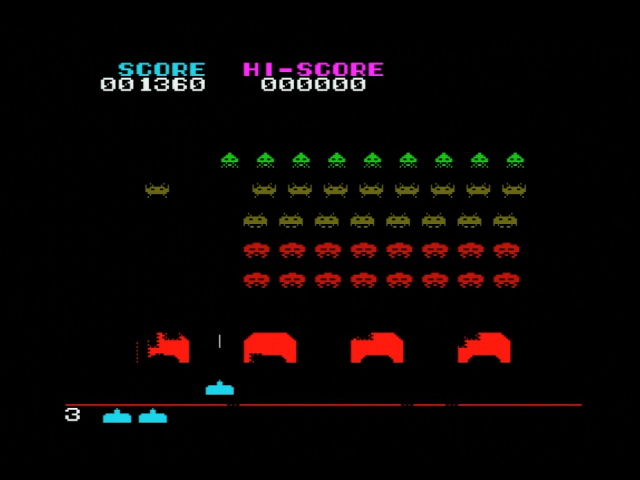
The major benefit of this version over the MSX1 is that it uses the full width of the screen; the NES port and the MSX1 both have status bars to try to imitate the original vertical monitor game’s resolution. I find this version more fun.
Galaxian
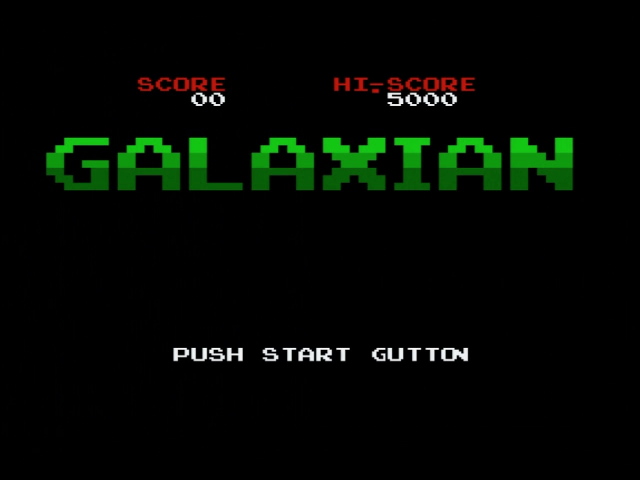
Galaxian never showed up for the SG-1000. So this is Namco’s MSX port, and it’s definitely passable, if you’re willing to push the start “gutton”. Of course, you might as well just stick to the MSX– the compatibility mode palette on the Master System doesn’t do it any favors.

Galaga

Any hopes that this was licensed may be gone now as you look upon what Seo Jin or Sono Game or whoever did to the title screen of the SG-1000 release of Galaga. As it turns out, that release was titled Sega-Galaga, and the title screen is supposed to look like this:
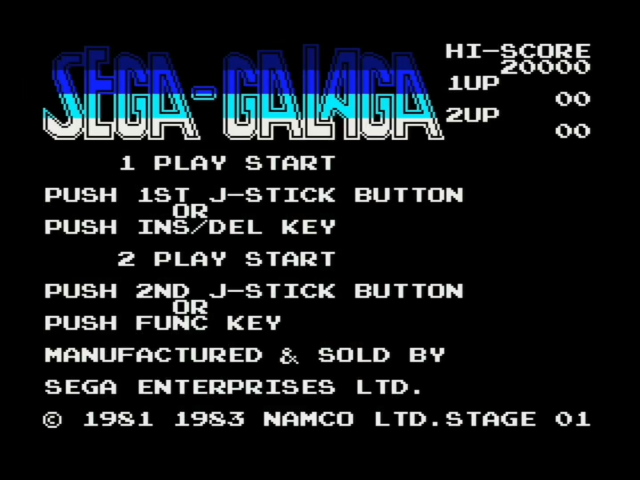
On the plus side, the gameplay is still there. This isn’t the best 8-bit home port of Galaga, but it’s still pretty good. The compatibility palette still doesn’t help; enemy ships are a bit darker.
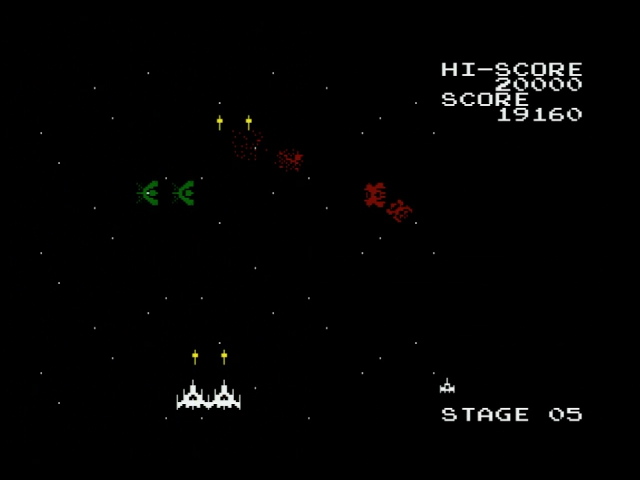
Flicky
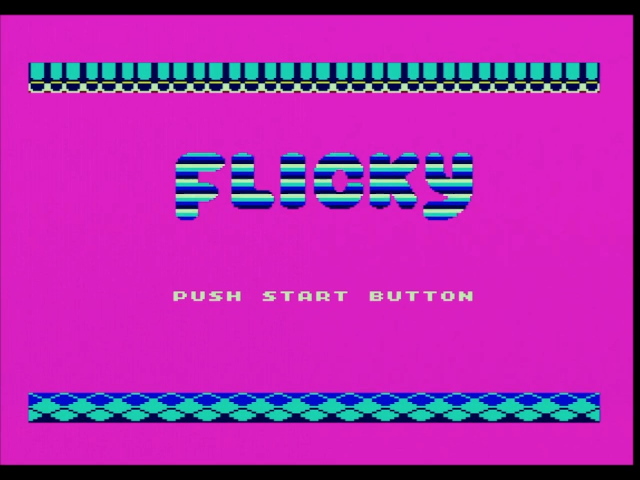
It’s Flicky, the SG-1000 edition. I talked about this game a bit in the Teddy Boy Blues post, so I won’t go into too much detail here. That does mean I have a screenshot of the real title lying around, so you can see how they expertly got rid of the Sega copyright.

Let me tell you, I really appreciated those extra lives. This version of Flicky is particularly unforgiving.
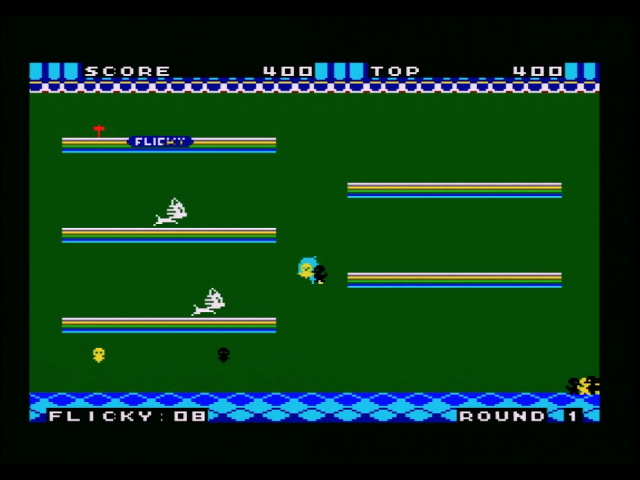
Teddy Boy
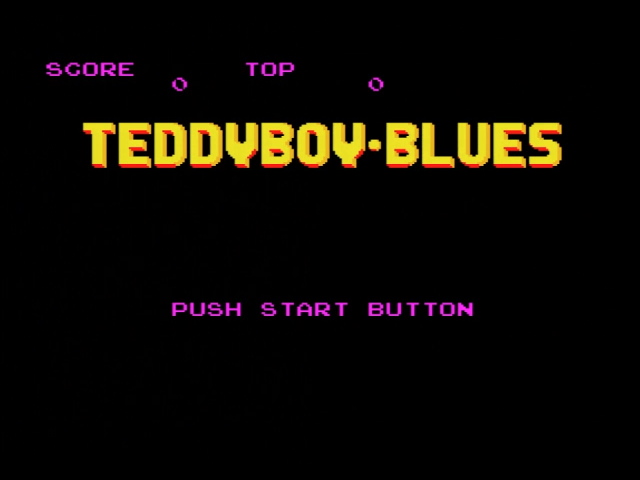
Oh hey, I was just talking about Teddy Boy Blues. And here it is! It’s the Master System version, but is the Japanese version, so you still get Yohko Ishino’s song.
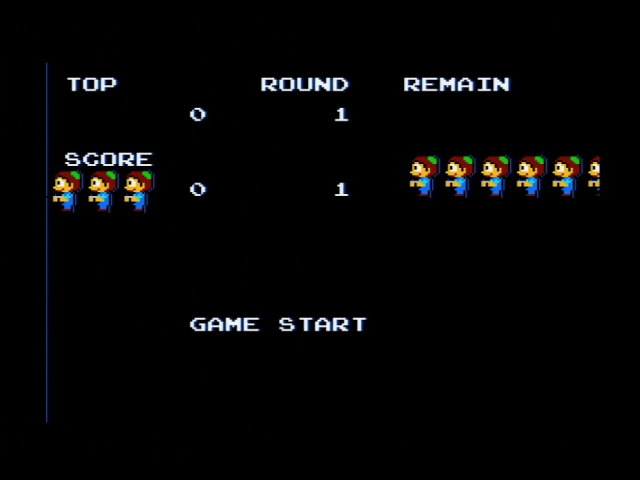
The pre-game interstitial is very confusing; not only is it clearly not designed for this many lives, it’s also got a black background with an odd blue glow around the sprites. Since Final Bubble Bobble also had background color changed to black, this makes me wonder if this is indeed a clone of the Master System VDP, with some kind of bug for certain background colors.
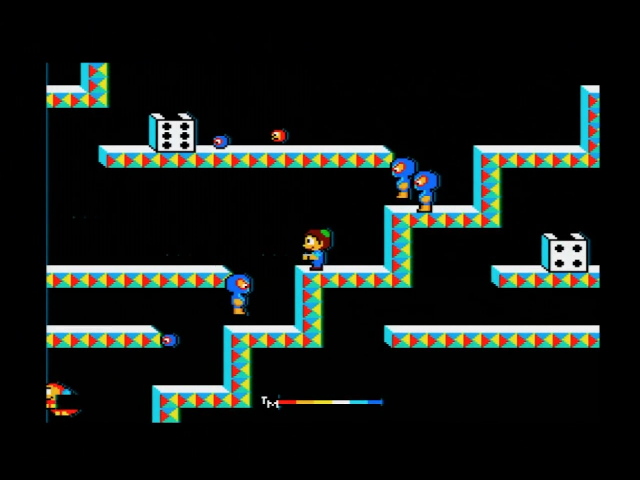
The black background and glowing sprites extend to gameplay as well. Given we also saw weird issues with background colors in Final Bubble Bobble, it definitely makes me wonder. Notice, however, that the Flicky title screen is still pink; this bug only seems to exist in Master System mode.
Ghost House

Another Master System game, Ghost House definitely looks like its title screen isn’t supposed to look like that, and it may have a grey background. But I can’t confirm. You see, my copy is a little… disassembled.
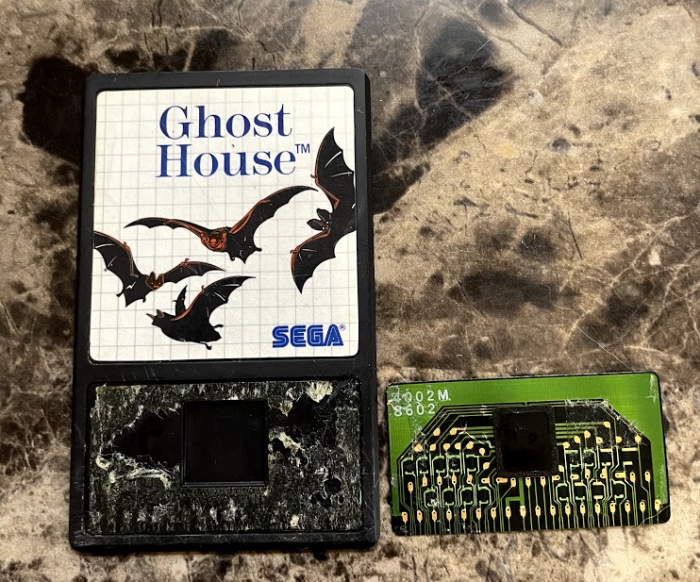
Bomb Jack

Another day, another SG-1000 port. Bomb Jack tries really hard to include all the graphical wonder of the arcade original, but it gets really busy as a result. Then add in the compatibility mode palette, and this version ends up combining Bomb Jack with Where’s Waldo.
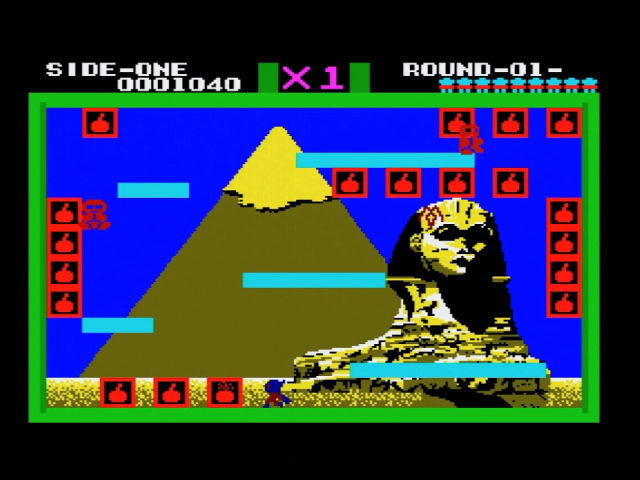
Kings Valley

This is indeed King’s Valley, a classic Konami MSX1 game. We’ll be seeing a lot more games from Konami as we move into the second half of the list. And like most of the MSX games, the palette change doesn’t do it any favors, but other than that it seems to play reasonably well.
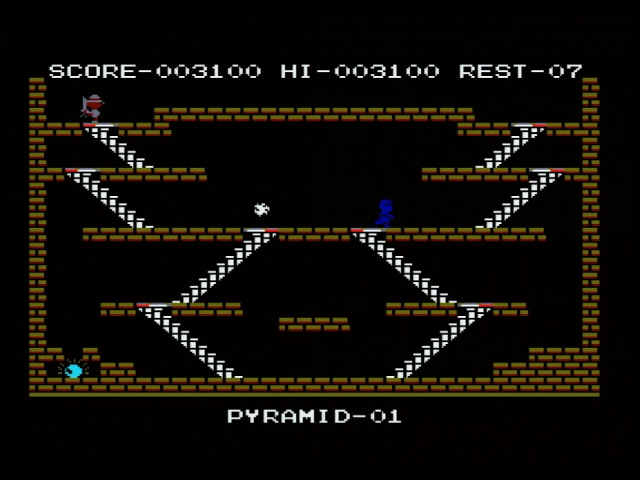
We’re halfway there!
Pippols
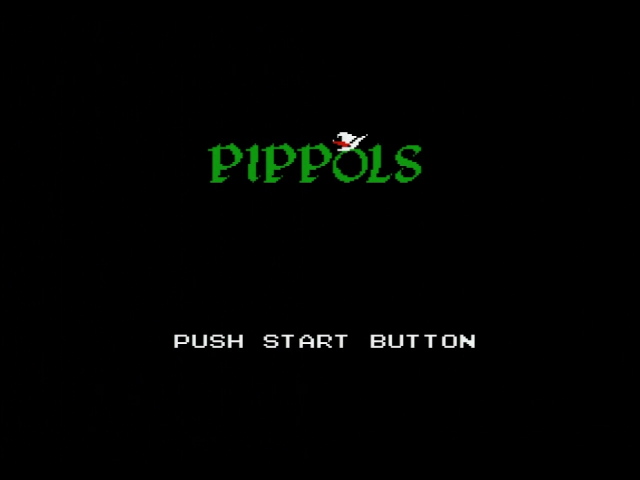
It turns out Pippols is exactly what it says it is; it’s Pippols, another classic Konami MSX release. I hadn’t played this before, but it’s pretty fun too. The compatibility palette is even fine here.
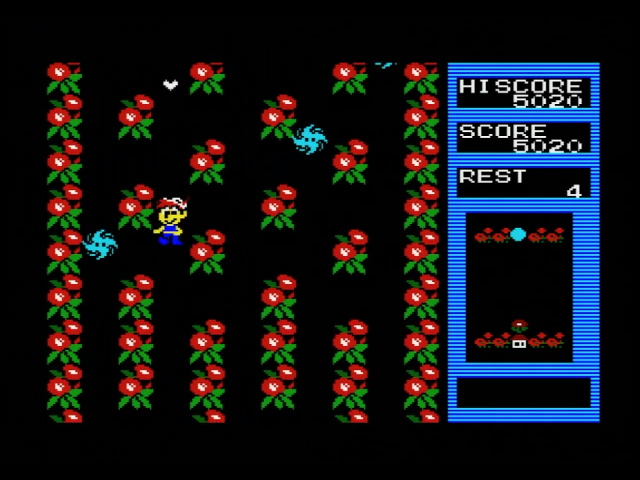
Dragon Story
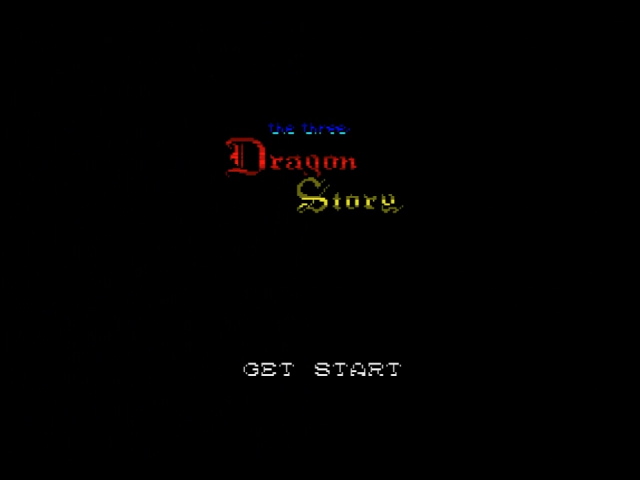
The Three Dragon Story is another Zemina game; and you can see that Zemina’s title is not included in this version; so it’s unlikely Seo Jin/Sono Game had anything to do with it directly. This game has no lives, and so it doesn’t get the usual enhancement. It’s quite difficult to last long as a result.
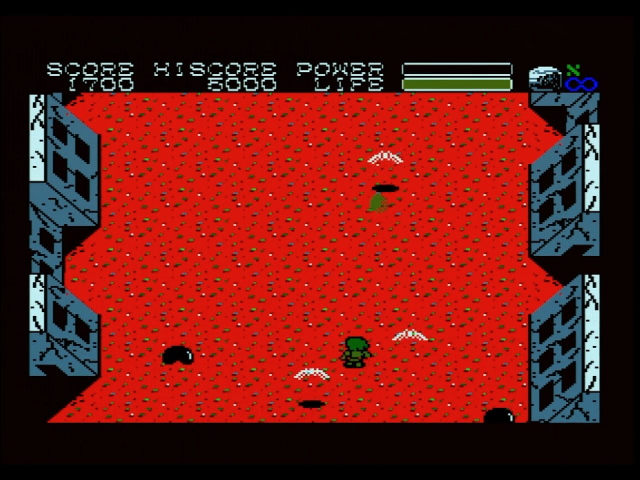
This game is often confused to be a hack of Konami’s Knightmare. However, while the two games do play similarly, and Zemina may very well have been inspired, I think this one is actually an original. Well, original to Zemina. Not so sure about Seo jin/Sono Game.
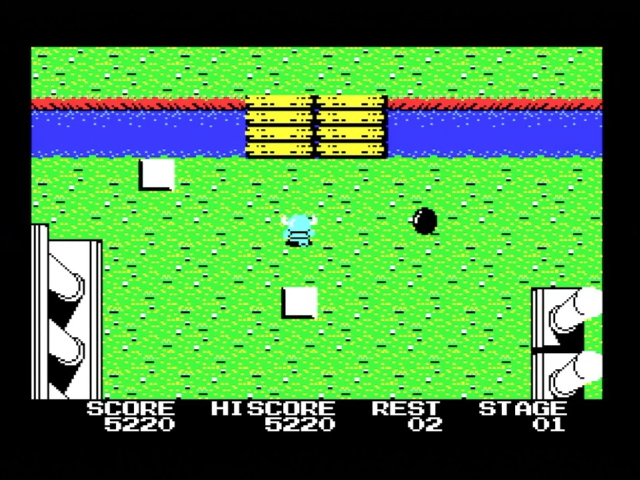
Spy vs Spy
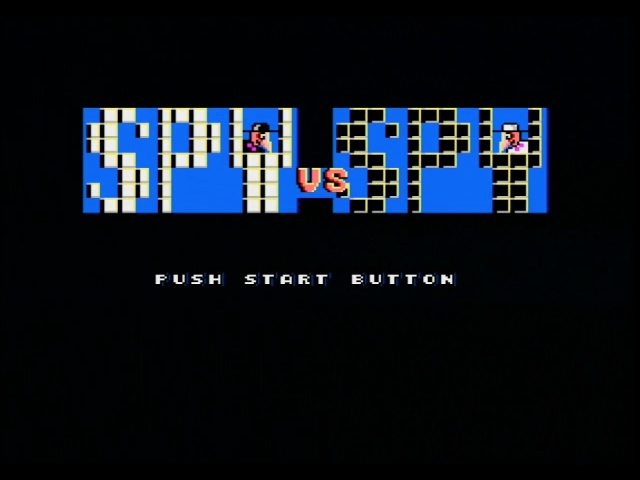
It’s Spy vs. Spy, a Master System release developed and published by Sega, based off the classic PC game. Like the other Master System titles, the background color seems to always be forced to black, which looks questionable on the title screen but fine in-game.
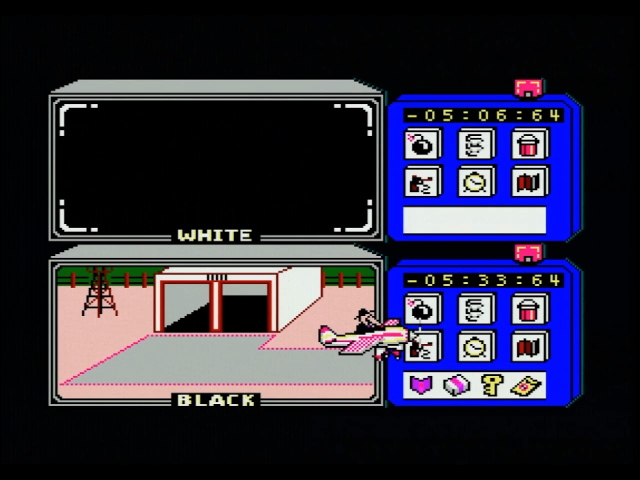
Pitfall II
You might wonder what version of Pitfall II they used here; I did a whole post on it, there were a bunch. But then again, you can probably figure out which one.

It’s the SG-1000 version. You get nine lives here, which is nice to see and does make the game a lot easier; what’s not nice to see is that they used the original revision of the game, so its colors aren’t optimized for the Master System compatibility palette. Also, I noticed a graphical glitch on the game over screen.
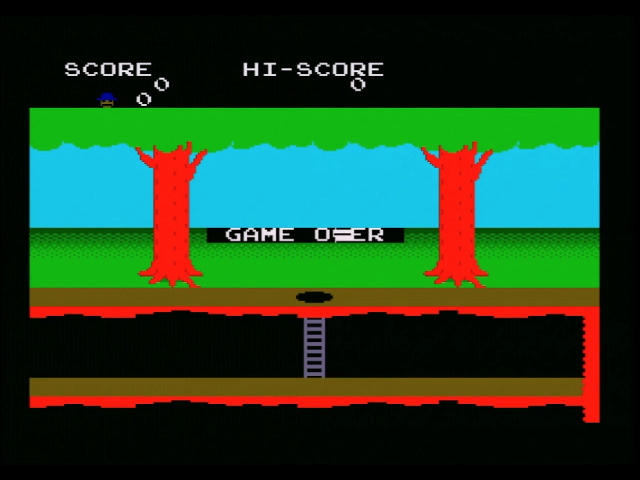
Drol
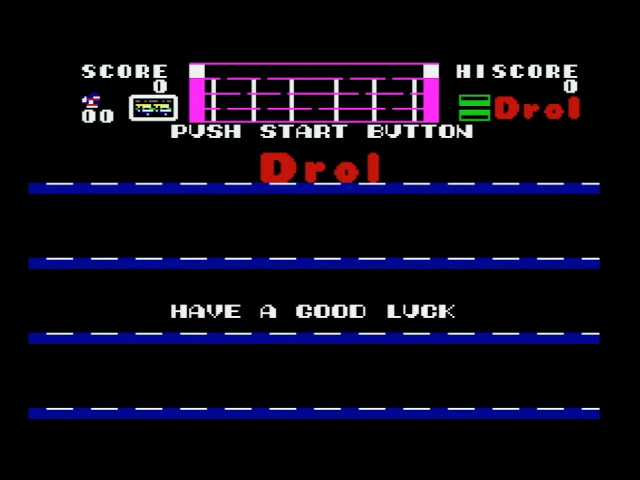
Another SG-1000 port? How droll.
Pit Pot
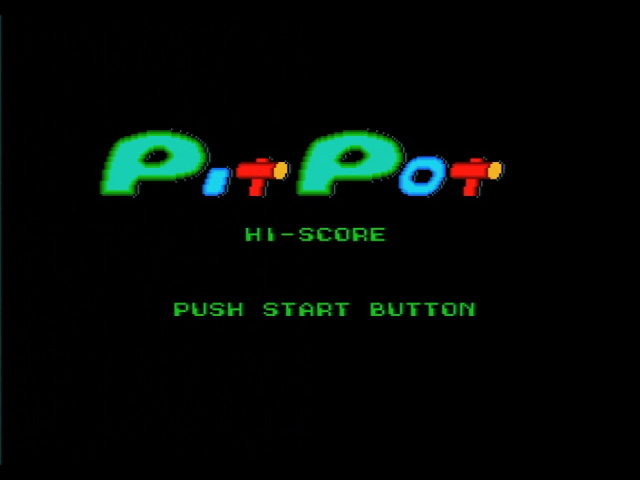
And here’s another Master System title. I’m not sure if this one ever came to the United States, but it was in a two-pack with Astro Warrior in Europe. The title screen is mangled by the black background, but thankfully this game uses a black background color in-game, so no issues there.
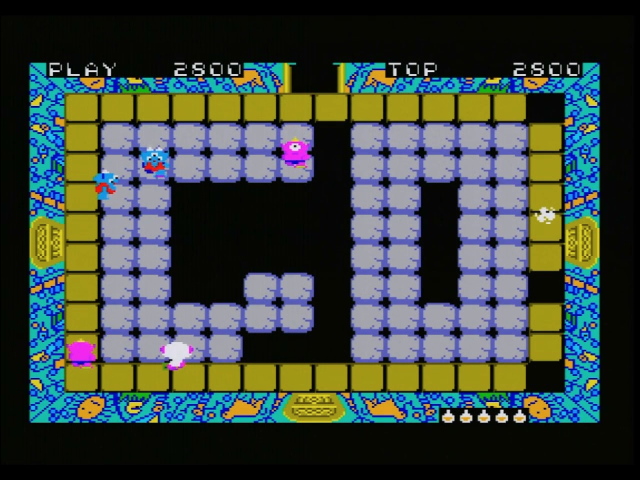
Hyper Sport
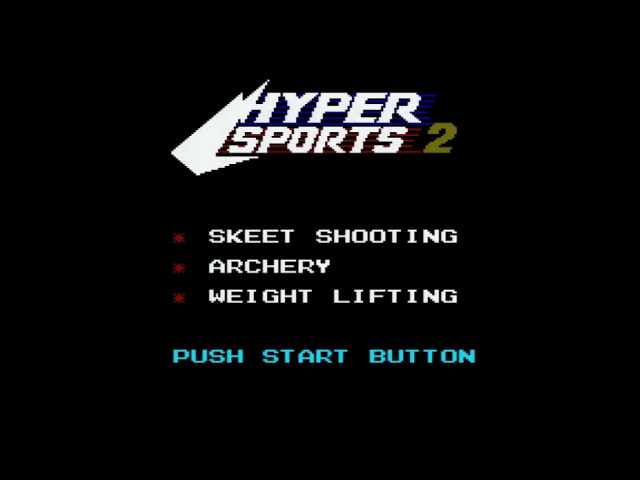
There was an official release of Konami’s Hyper Sport for the SG-1000. Surprisingly, this isn’t it; it’s actually a port of their Hyper Sports 2 for the MSX. All three exciting minigames are here.
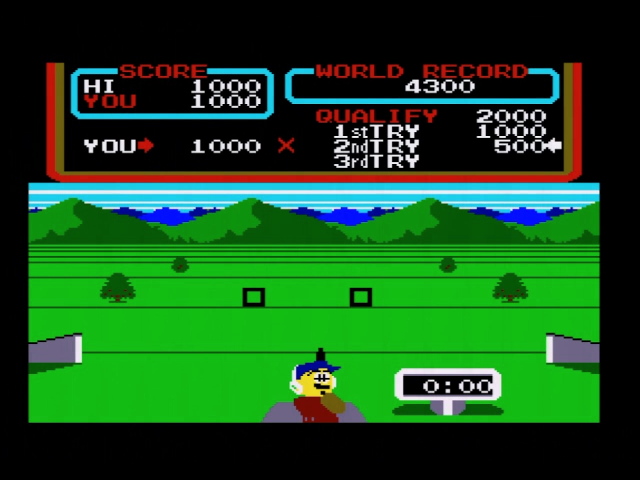
Super Tank
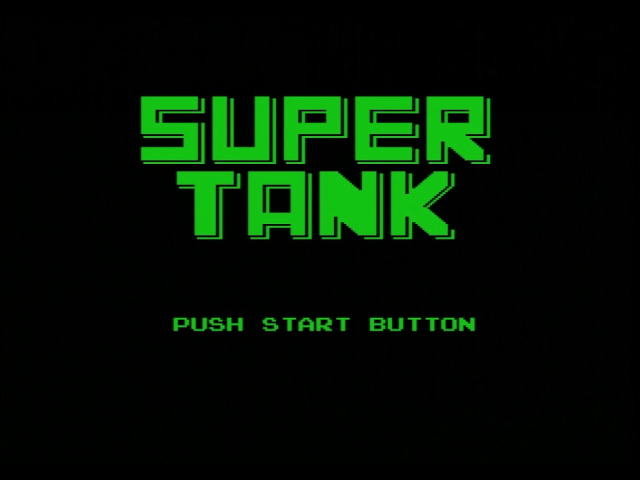
Super Tank, on the other hand, is indeed the Sega-developed and published SG-1000 game. Extra lives are much needed here.
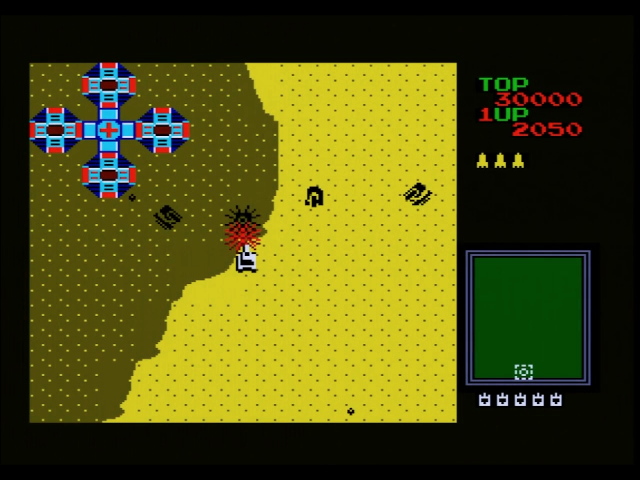
Congo Bongo
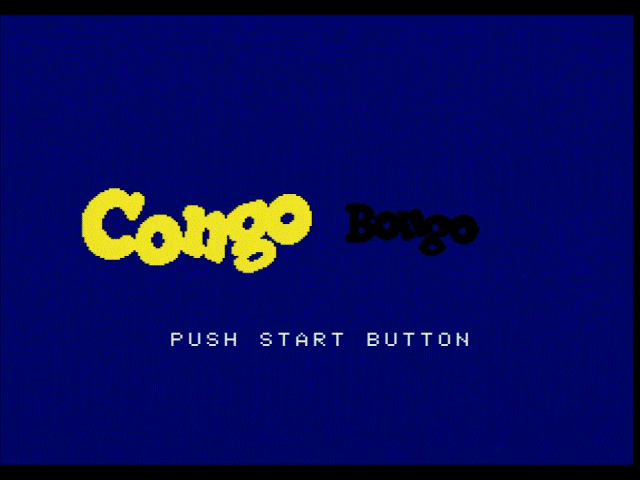
Unfortunately, this is also the SG-1000 version, and it’s one of the weakest ports of the game. A shame Sono/Seojin didn’t go for the MSX one this time; on SG-1000, the game doesn’t even try to have the game’s standout feature, its isometric scrolling. (The arcade game used a Zaxxon-style board that does isometry in hardware, which is something I’ve talked about before)
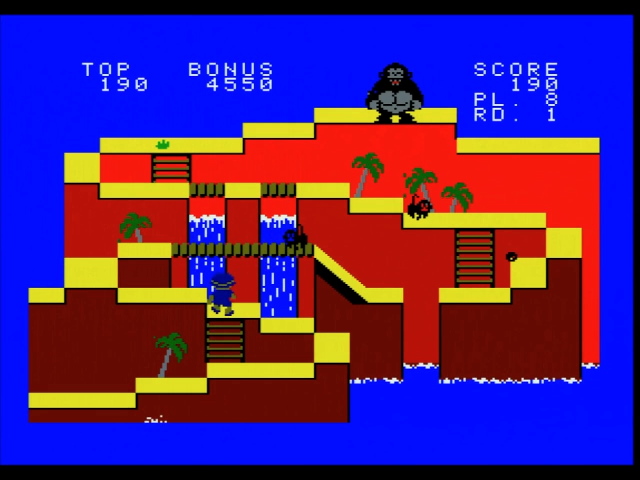
Circus

Circus is actually Circus Charlie, another classic Konami title. This title was released for NES in Japan but never made its way west; it was also released for MSX. Guess which one this port was taken from. With the circus theme, the garish compatibility palette really doesn’t look that bad.

Road Fighter
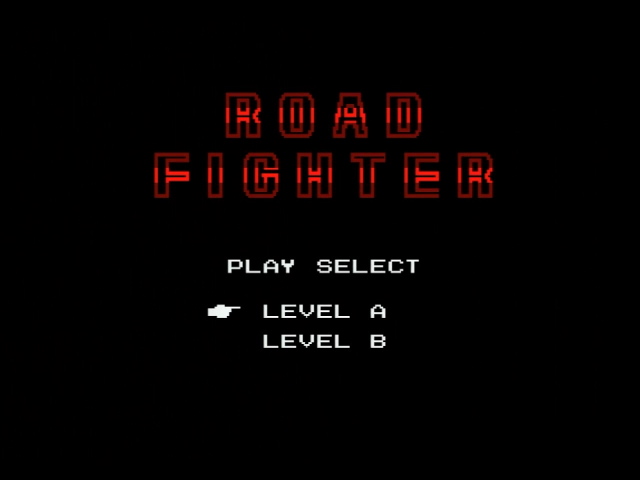
Another Konami MSX title, that also got a Famicom port that never went west in either form. This game is another one where there’s no lives for the developers to increase to nine, so it ends up being just as hard in this hacked version as it was in the original.
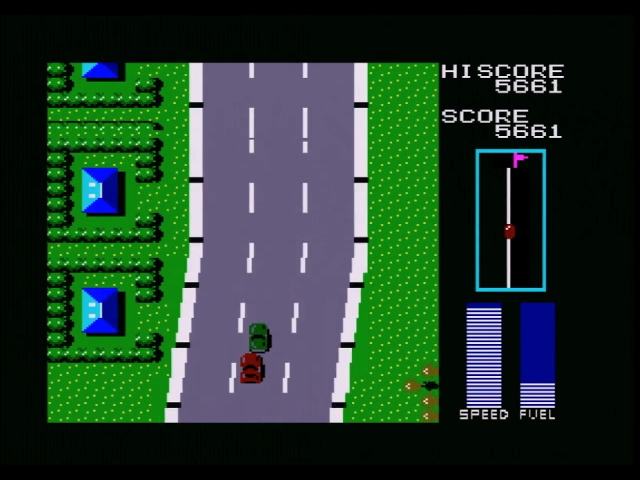
Astro

Astro is Astro Flash, a game released as Transbot in the west. In this horizontal shooting game for the Master System, you collect power-ups that transform your robot to help you better fight cisbots (they do not transform). Since its background color is always black, this game is right at home here.
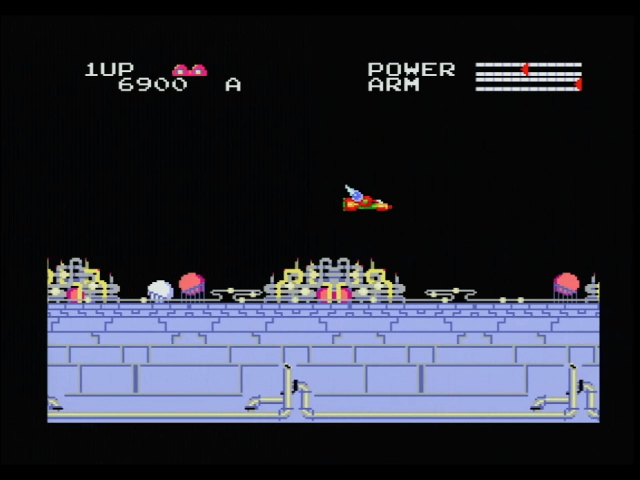
Goonies
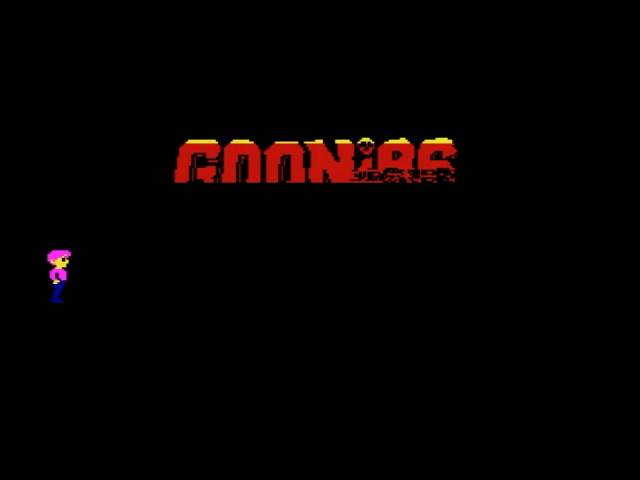
Goonies is a Konami game with quite a mangled title screen. I’m not sure if the removal of “The” was deliberate, maybe some kind of weak attempt to dodge trademarks?
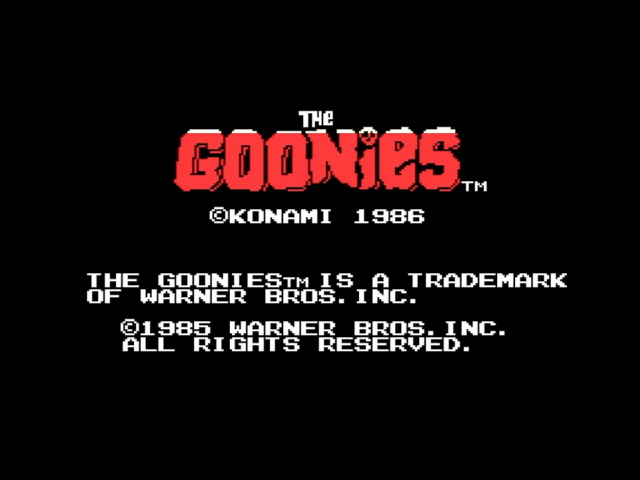
In any case, this is the MSX The Goonies, which is a completely different game than either of the Famicom The Goonies games.
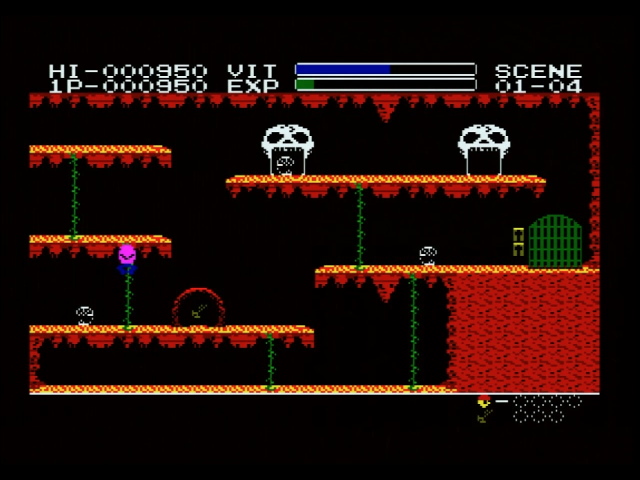
Road Runner I
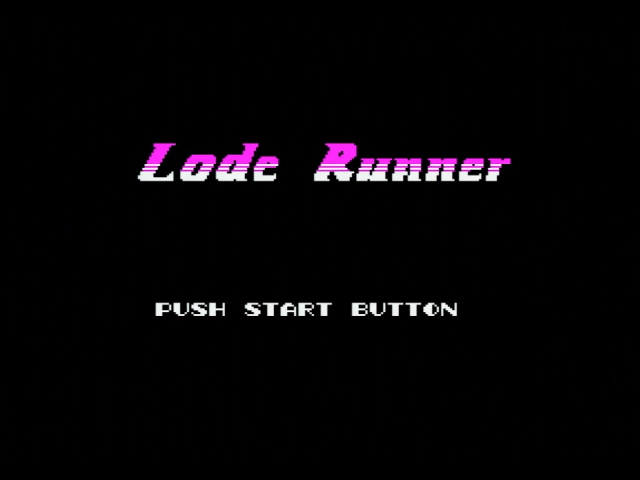
Meep meep? Not quite. This is Lode Runner; specifically, the SG-1000 version, which graphically is closer to the Apple II version and runs at a nice brisk pace. I often wonder how spelling mistakes like this happen when the word is spelled on the title screen, but then again, my Japanese isn’t great and maybe I’d make an equivalent misteak even in my native English.
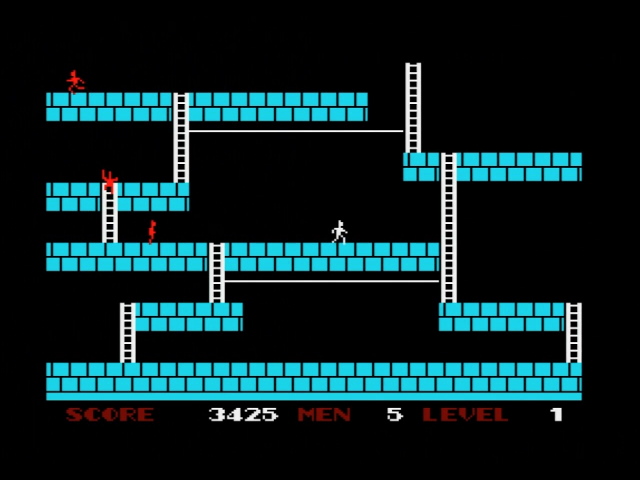
It may be called Road Runner I because there was a later second Lode Runner game on SG-1000, Championship Lode Runner. Another fun thing is that this game always allows you to use the JAMMA button 3 to exit, even during gameplay, as long as you have additional credits inserted. Good news if you get frustrated easily and want to immediately jump out to a different game.
Masic Tree
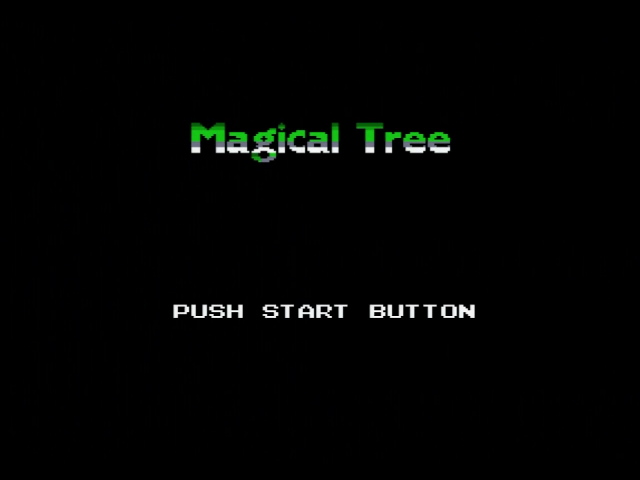
Another Konami MSX title; Masic Tree is actually Magical Tree. This game is really fun, but given the Native American protagonist, the Master System compatibility mode palette makes this one really unfortunate. Maybe play this one on the MSX.
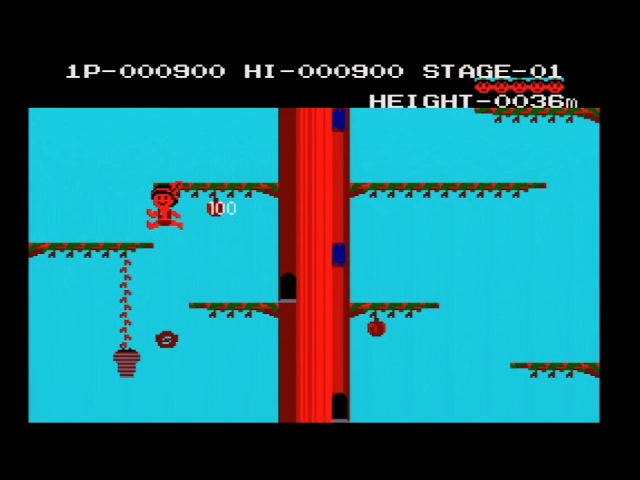
Mouse
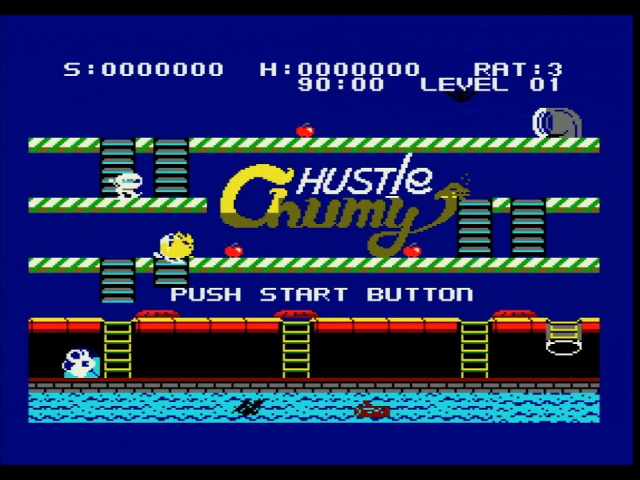
And we end on Mouse. This is actually Hustle Chumy, an early Compile title for the SG-1000. (And it seems to be unique for that console) You play as a mouse– good job, you got that one– named Chumy who has to walk through a maze collecting the food to bring home. Unlike a lot of collectathon games from this period, collecting items slows you down, which adds an element of difficulty.

Multi-cart madness
So, how do the game origins stack up? We’ve got ten MSX games, ten SG-1000 games, and twelve Master System games (counting Alex Kidd in Miracle World because I’m generous). The selection of this board is quite interesting too; a complete focus on action games, without any sports titles. (The lack of RPGs like Phantasy Star is pretty logical for an arcade environment)
Overall, do I recommend you buy it? No; I think any era in which this board would have made money for your arcade ended quite awhile ago, and if you just want to play the games, today there are much better options that don’t make Teddy Boy glow with Cherenkov radiation. But it’s a neat flash of a moment in time, where not only was it desirable to have, but you could still get away with it, at least in Korea.
